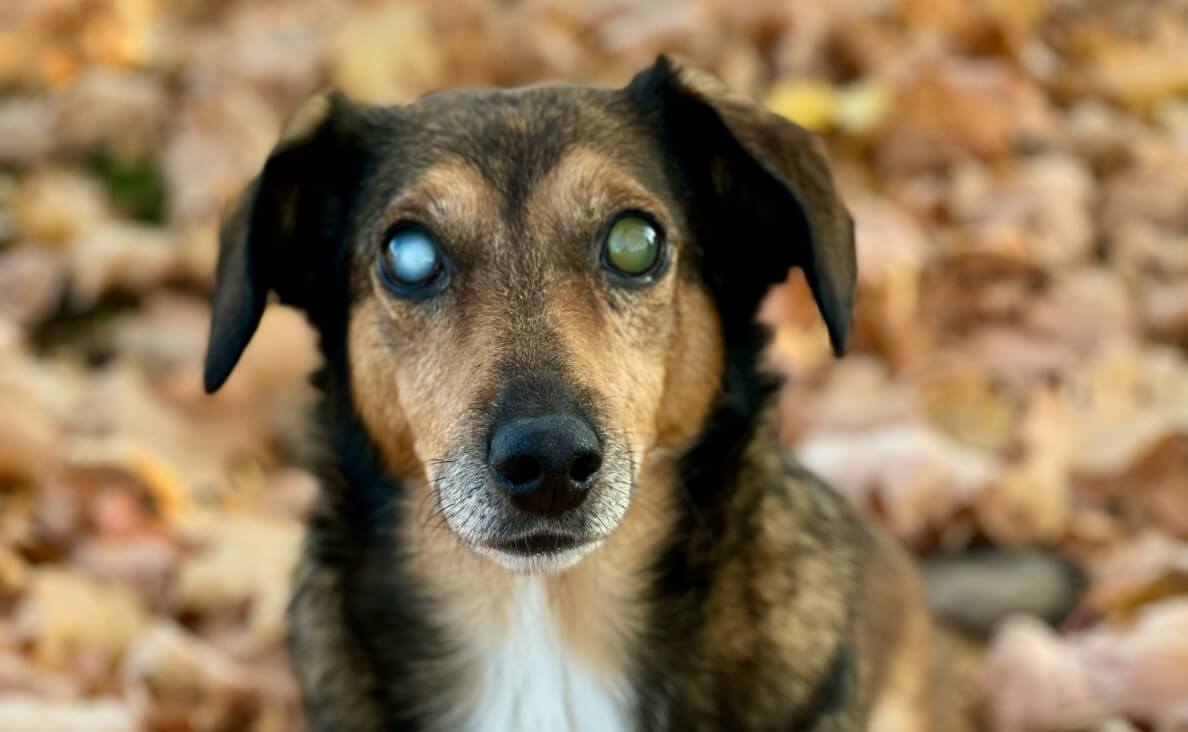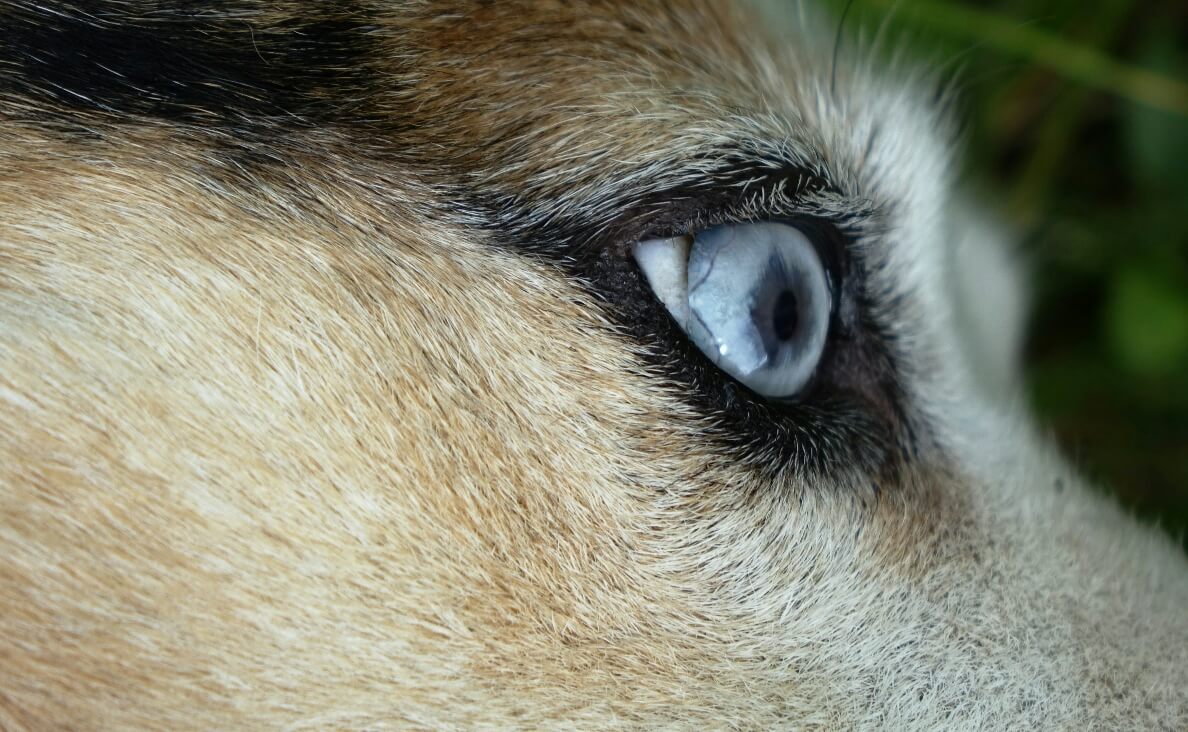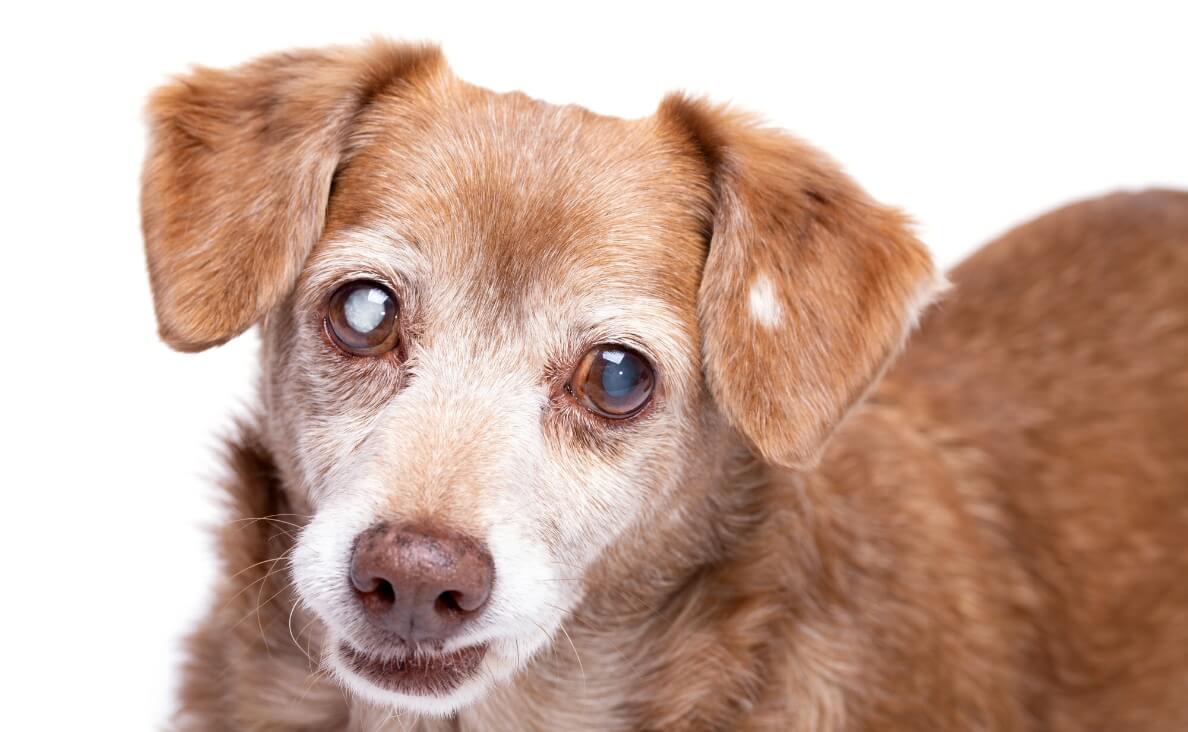
If you’ve noticed your dog bumping into furniture, hesitating at stairs, or if their eyes seem cloudy or bluish, you might be wondering what’s going on. As dog parents, it’s our instinct to watch for signs that something’s wrong—and when it comes to eye health, every detail matters. One common but often misunderstood condition is dog cataracts.
Cataracts can affect dogs of all ages and breeds, but they’re most often seen in older dogs or dogs with underlying health issues like diabetes. Left untreated, they can lead to partial or complete vision loss—but with early diagnosis and the right care, many dogs go on to live full, happy lives.
In this guide, we’ll walk you through everything you need to know about dog cataracts—what they are, how to spot them, treatment options, and how to support your pup every step of the way.
What Are Dog Cataracts?
A cataract is an opacity or cloudiness that forms in the lens of the eye, which normally helps focus light onto the retina. When a cataract develops, the lens becomes cloudy, and light can no longer pass through clearly—leading to impaired vision.
In dogs, cataracts can be:
- Congenital (present at birth)
- Inherited (genetic and breed-related)
- Age-related
- Secondary to health conditions like diabetes or eye trauma
It’s important not to confuse cataracts with nuclear sclerosis, a normal age-related change in the eyes of senior dogs that also causes a bluish-gray tint but typically doesn’t affect vision significantly.

Common Causes of Dog Cataracts
Understanding what causes dog cataracts can help you protect your pup’s eyesight and possibly slow progression. Here are the most common culprits:
Genetics and Breed Predisposition
Some breeds are more prone to developing cataracts, including:
- Cocker Spaniels
- Poodles
- Boston Terriers
- Siberian Huskies
- Miniature Schnauzers
If your dog belongs to one of these breeds, be extra attentive to early signs.
Aging
As with humans, the lens of a dog’s eye can naturally degenerate over time, making older dogs more susceptible to cataracts.
Diabetes
Diabetic dogs are at significantly higher risk for cataracts. High blood sugar affects the lens and can cause rapid cataract formation—even in younger dogs.
Eye Trauma or Inflammation
An injury to the eye or ongoing inflammation (uveitis) can trigger cataracts as a secondary condition.
Nutritional Deficiencies
Though less common, inadequate nutrition—particularly during puppyhood—can lead to developmental cataracts.

Early Signs and Symptoms to Watch For
Catching dog cataracts early is crucial for maintaining quality of life and expanding treatment options. Look for these signs:
- Cloudy, bluish, or white spot in one or both eyes
- Hesitation or bumping into objects
- Increased anxiety or hesitance in low light or at night
- Reluctance to jump on furniture or go down stairs
- Pawing at the face or eyes
- Increased reliance on smell and hearing
If you see any of these symptoms, it’s a good idea to schedule a veterinary eye exam as soon as possible.
Diagnosis and Veterinary Evaluation
Only a veterinarian can confirm whether your dog has cataracts and determine the severity.
A full eye exam will likely include:
- Slit-lamp biomicroscopy to examine the lens
- Ophthalmoscopy to assess the retina and optic nerve
- Tonometry to check for glaucoma (which can occur with advanced cataracts)
If surgery is being considered, a referral to a veterinary ophthalmologist may be necessary. Early diagnosis gives your dog the best chance at preserving or restoring vision.
Treatment Options for Dog Cataracts
Treatment depends on the severity of the cataracts, the dog’s overall health, and whether they’re causing vision loss.
Surgical Treatment
The most effective treatment for cataracts is phacoemulsification—a procedure similar to human cataract surgery. The cloudy lens is emulsified and removed using ultrasound, and a new artificial lens is implanted.
- Success rate: Over 85% when performed by a veterinary ophthalmologist
- Cost: Typically $2,000–$4,000 per eye, including pre-op and post-op care
- Post-op care: Involves eye drops, limited activity, and follow-up visits
Surgery is not always recommended for every dog, especially if they have other health issues or retinal disease.
Non-Surgical Management
If surgery isn’t an option, your vet may recommend:
- Anti-inflammatory eye drops to reduce irritation
- Antioxidant supplements to support eye health
- Environmental adjustments to help your dog adapt
While these options won’t reverse cataracts, they can help slow progression and improve comfort.

Can You Prevent Dog Cataracts?
While you can’t always prevent cataracts, especially in breeds prone to them, there are steps dog parents can take to support long-term eye health.
Manage Underlying Conditions
If your dog has diabetes or another metabolic disorder, working closely with your vet to manage blood sugar is essential.
Feed an Antioxidant-Rich Diet
Certain nutrients support eye health, including:
- Lutein
- Vitamin C
- Vitamin E
- Omega-3 fatty acids
Look for high-quality dog food with these nutrients, or consider supplements under veterinary guidance.
Eye Health Supplements
Products containing astaxanthin or bilberry extract may help protect the eyes—but always check with your vet first.
Routine Vet Visits
Regular checkups help spot early changes before they become serious.

Living with a Dog Who Has Cataracts
Even if cataracts aren’t treatable, dogs are incredibly adaptable. With a little support, they can continue to enjoy life and feel safe.
Create a Safe Home Environment
- Keep furniture layouts consistent
- Block off stairs or dangerous areas
- Use rugs or runners as tactile “paths”
Enhance Other Senses
- Use consistent voice commands
- Place toys with different textures and scents throughout the home
- Add bells to other pets’ collars for awareness
Provide Reassurance
Blind or visually impaired dogs can become anxious. Stick to routines, offer praise, and give them time to adjust.

Conclusion
Cataracts may sound scary, but with early detection and proper care, your dog can continue to thrive. Whether your pup is a senior or just starting to show signs of vision loss, knowing what to look for—and what to do next—empowers you to make the best choices for their health and happiness.
If you’ve noticed cloudy eyes, changes in behavior, or other symptoms of dog cataracts, don’t wait. Schedule a veterinary checkup and explore your options with a trusted professional.
What About You?
Has your dog ever been diagnosed with cataracts? What helped you manage their condition? Share your story or questions in the comments below—we’d love to hear from you!

 A Guide to Laser Therapy for Dogs
A Guide to Laser Therapy for Dogs How to Care for a Dog with Cushing’s Disease: A Comprehensive Guide
How to Care for a Dog with Cushing’s Disease: A Comprehensive Guide Aspirin for Dogs: What You Need to Know Before Use
Aspirin for Dogs: What You Need to Know Before Use Treat Your Disabled Dog with Integrative Medicine
Treat Your Disabled Dog with Integrative Medicine How to Keep Your Dog Cool During a Heatwave
How to Keep Your Dog Cool During a Heatwave






Leave a Reply